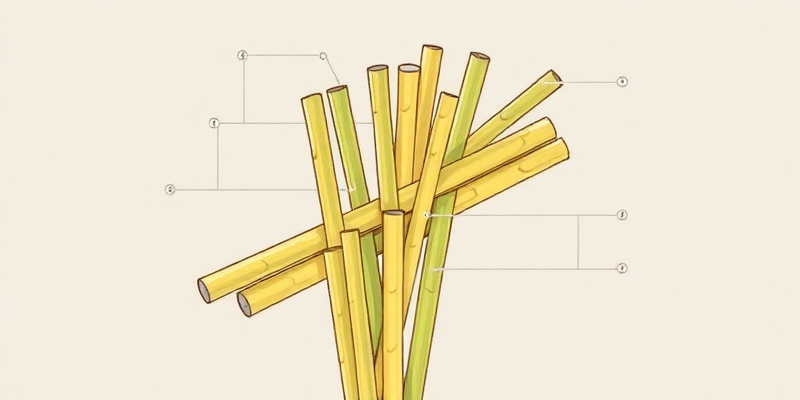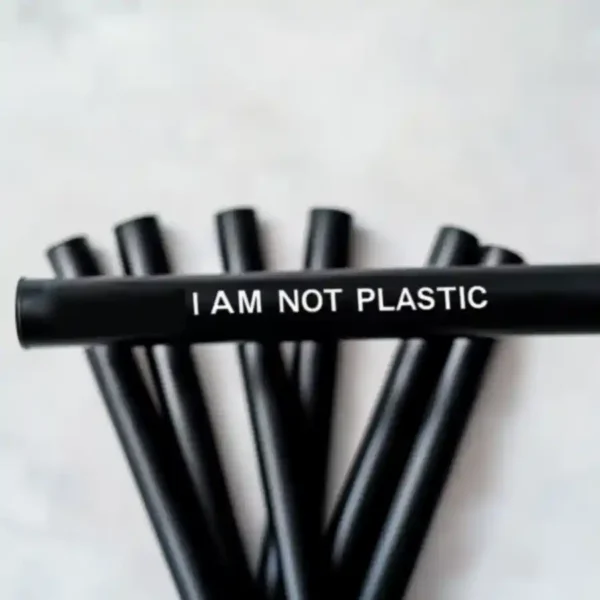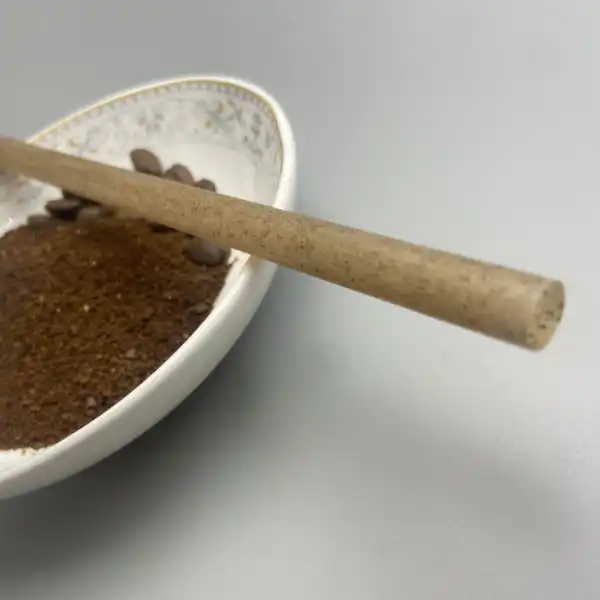Sustainable Sugarcane Straws for NY Businesses: B2B Guide

Introduction: Plastic Bans and New York Plastic Straw Ban Sugarcane Alternatives Benefits

Picture this: It’s a busy Friday night at your Manhattan restaurant. The tables are full, orders are flying in, and a customer asks your server about your sustainability practices—specifically about the plastic straws in their drink. This scenario is playing out acros New York as businesses scramble to adapt to changing regulations and consumer expectations.
New York’s plastic straw ban, which requires food service establishments to provide straws only upon request and encourages sustainable alternatives, has fundamentally changed how businesses approach their everyday operations. With potential fines reaching up to $250 for first violations and increasing for subsequent offenses, the financial incentive to switch is clear. But beyond regulatory compliance, there’s a significant opportunity here.
Explore sustainable alternatives for businesses facing plastic straw bans that not only meet legal requirements but actually enhance your brand’s reputation. Sugarcane straws have emerged as a leading solution for New York businesses looking to navigate these changes while maintaining customer satisfaction.
Made from bagasse—the fibrous byproduct left after extracting juice from sugarcane—these straws offer a compelling alternative that delivers on both performance and sustainability. Unlike paper straws that often dissolve before you finish your drink, sugarcane straws maintain their structure for hours in beverages, providing a user experience much closer to traditional plastic straws.
For New York businesses from Brooklyn cafés to Upstate conference centers, the transition to sugarcane straws represents more than compliance—it’s an opportunity to align with the values of a growing eco-conscious customer base. According to recent surveys, 78% of New York consumers say they’re more likely to patronize businesses that demonstrate environmental responsibility through sustainable practices.
As we explore the benefits, certifications, and practical implementation of sugarcane straws for your New York busines, remember that this switch isn’t just about avoiding fines—it’s about positioning your busines for succes in an increasingly environmentally-conscious marketplace.
Regulatory Compliance: Certifications for New York Plastic Straw Ban Sugarcane Alternatives

Navigating the regulatory landscape in New York requires understanding both the letter and the spirit of plastic reduction laws. The state’s plastic straw upon-request law is just the beginning—many local jurisdictions have implemented even stricter regulations. In fact, violations of these regulations cost New York businesses over $4.2 million in fines during 2023 alone.
When selecting sugarcane straws for your busines, proper certifications aren’t just nice-to-have—they’re essential protection against regulatory issues. Here’s what New York businesses need to know:
FDA certification ensures your sugarcane straws meet federal safety standards for food contact. The FDA’s guidelines for food contact materials are extensive, covering everything from manufacturing processes to potential chemical migration. Without this certification, you could face significant liability issues beyond local plastic ban violations.
LFGB certification, which follows German food safety standards (often considered more stringent than US requirements), provides additional assurance of product safety. This certification examines potential chemical leaching and structural integrity under various conditions—especially important for hot beverages common in New York’s coffee culture.
Learn why humidity-resistant sugarcane straws are essential for New York’s variable climate to ensure your sustainable solution performs consistently year-round. Unlike some alternatives that might deteriorate in storage during humid summer months, properly certified sugarcane straws maintain their integrity.
For businesses operating acros multiple locations, consistent compliance becomes even more challenging. Consider the case of a regional coffee chain that switched to uncertified “eco-friendly” straws, only to face both customer complaints about quality and regulatory issues in three different municipalities. The right certified sugarcane straws would have prevented both problems.
When sourcing sugarcane straws for your New York busines, always request documentation of these certifications directly from suppliers. Legitimate manufacturers will readily provide this information, ensuring your busines remains compliant while delivering a safe, quality experience to your customers.
How New York Plastic Straw Ban Sugarcane Alternatives Compare to Other Eco Alternatives

When evaluating sustainable straw options for your New York busines, understanding the relative strengths and limitations of each alternative is crucial. Discover the complete eco-friendly benefits of sugarcane straws compared to other alternatives to make an informed decision for your establishment.
According to a 2023 Cornell University study, 67% of New York food service businesses reported customer dissatisfaction with their first alternative straw solution, leading to expensive switchovers and inventory waste.
Here’s how sugarcane straws stack up against other popular alternatives:
| Alternative | پائیداری | User Experience | ماحول کا اثر | Cost Effectivenes | لازمی عمل درآمد |
|---|---|---|---|---|---|
| ————- | ———— | —————– | ——————— | ——————- | ———————- |
| گنے کے تنکے | 3-4 hours in cold/hot drinks | Most similar to plastic | Fully compostable, carbon-negative production | Moderate initial cost, decreasing with bulk orders | Meets all NY requirements |
| کاغذ کے تنکے | 30-60 minutes before softening | Often changes drink taste, deteriorates quickly | Compostable but resource-intensive production | Low initial cost but frequent replacement needed | Meets basic requirements |
| PLA “Bioplastic” | Excellent durability | Nearly identical to plastic | Requires industrial composting, often contaminating recycling | Moderate cost | May not meet future regulations |
| بانس کے تنکے | Very durable, reusable | Distinctive mouthfeel, requires cleaning | Sustainable but resource-intensive cleaning | High initial investment, low long-term cost | Meets requirements but raises sanitation concerns |
| Metal Straws | Extremely durable | Conducts temperature, different mouthfeel | Resource-intensive production but indefinitely reusable | Highest initial cost, theft concerns | Compliant but presents safety and cleaning challenges |
Sugarcane straws particularly excel in New York environments because they balance performance with genuine sustainability. Unlike paper straws that quickly dissolve in Manhattan’s signature cocktails or smoothies from Brooklyn juice bars, sugarcane straws maintain their structure throughout the customer experience.
For businesses like cafés and restaurants where drink quality is paramount, the neutral taste profile of sugarcane straws prevents the flavor alteration common with paper alternatives. And unlike PLA “bioplastic” straws that often require industrial composting facilities (limited in parts of New York), sugarcane straws are home compostable and will degrade naturally if they happen to reach the environment.
The practical considerations extend to storage and handling as well. Sugarcane straws don’t require the careful moisture control that paper straws demand, saving valuable staff time and reducing waste from compromised inventory—a significant advantage in New York’s space-constrained service environments.
Top Busines Benefits of Switching to New York Plastic Straw Ban Sugarcane Alternatives
Beyond compliance and environmental considerations, sugarcane straws offer tangible busines advantages for New York establishments. Learn how sugarcane straws can enhance your busines’s sustainability profile and bottom line simultaneously.
Customer perception translates directly to revenue: A New York Restaurant Association survey found that businesses highlighting their sustainable practices saw an average 21% increase in customer retention and 15% higher check averages compared to competitors.
Here’s how switching to sugarcane straws can benefit your busines:
**Enhanced Brand Perception:** In New York’s competitive hospitality landscape, environmental commitment has become a powerful differentiator. Sugarcane straws provide a visible, tangible demonstration of your values that customers directly interact with. Consider how effectively farm-to-table restaurants throughout New York have built loyal followings based on sustainability commitments—the straw in your drink tells a similar story about your brand.
**Cost Stabilization:** While the initial per-unit cost of sugarcane straws may be higher than conventional plastic, implementing an upon-request policy (already required by law) typically reduces overall straw usage by 40-60%. Combined with bulk ordering discounts, many businesses find the total cost difference to be negligible or even favorable over time.
**Reduced Waste Management Costs:** Compostable sugarcane straws can be disposed of with food waste, potentially reducing your commercial waste hauling costs. In areas of New York with composting programs, this can significantly impact your waste management expenses. A Brooklyn cafe reported saving $2,700 annually on waste management after switching to fully compostable service items including sugarcane straws.
**Marketing Opportunities:** Your sustainability initiatives provide rich content for social media, local pres outreach, and customer communications. Highlighting your switch to sugarcane straws can generate positive publicity and customer engagement. See how conference and event planners are leveraging sustainable straws in their marketing to attract environmentally conscious clients.
**Staff Engagement and Retention:** Environmental initiatives increasingly matter to employees, particularly among younger workers who make up much of the hospitality workforce. Businesses implementing comprehensive sustainability programs (including visible changes like sugarcane straws) report 24% higher staff retention rates—significant in New York’s competitive labor market.
**Future-Proofing Your Busines:** As regulations around single-use plastics continue to evolve and tighten, businesses that have already transitioned to sustainable alternatives avoid disruption and additional transition costs. Early adopters gain valuable implementation experience while building customer loyalty around their environmental values.
Environmental Impact: Why New York Plastic Straw Ban Sugarcane Alternatives Wins
The environmental advantages of sugarcane straws extend far beyond simply eliminating plastic. When New York businesses choose sugarcane straws, they’re participating in a circular economic model with remarkable environmental benefits.
According to the United Nations Environment Programme’s analysis of plastic alternatives, agricultural byproduct materials like sugarcane bagasse represent one of the most promising pathways to truly sustainable single-use items. Their life-cycle assessment found that sugarcane-based products can reduce carbon emissions by up to 80% compared to conventional plastics.
What makes sugarcane straws particularly impactful is their origin story. Rather than requiring dedicated cropland, they utilize bagasse—a manufacturing byproduct that would otherwise be burned or discarded. This repurposing prevents an estimated 1.4 tons of CO2 emissions per ton of bagasse utilized, creating a rare win-win scenario where waste becomes a valuable resource.
Discover how sugarcane straws support a circular economy model that reduces waste while creating value. For New York businesses with sustainability goals or ESG commitments, this represents a measurable contribution to environmental objectives.
The end-of-life benefits are equally impressive. Unlike conventional plastics that persist for centuries, sugarcane straws completely decompose within 90-180 days in home composting conditions. Even in landfill environments, they break down far more quickly than plastic or PLA alternatives. For New York’s watershed protection initiatives, this rapid biodegradation significantly reduces potential environmental harm.
When New York businesses make the switch to sugarcane straws, they’re not just eliminating a problematic plastic item—they’re actively participating in a regenerative economic model that transforms waste into value while dramatically reducing environmental impact.
Case Study: New York Plastic Straw Ban Sugarcane Alternatives Succes in Action
When the historic Riverside Hotel and Conference Center in the Hudson Valley faced New York’s plastic reduction regulations, they saw an opportunity rather than an obstacle. With 200+ rooms and multiple food service outlets serving over 150,000 guests annually, their plastic footprint was substantial—approximately 500,000 straws yearly.
Explore how your busines can implement a successful transition to sugarcane straws based on real-world succes stories like the Riverside’s experience.
Their initial switch to paper straws in 2022 proved problematic. “Customer complaints increased 380% specifically mentioning dissatisfaction with straws that collapsed mid-drink,” explains Food and Beverage Director Mia Chen. “We had to find a sustainable option that wouldn’t compromise the guest experience.”
After testing multiple alternatives, they implemented NatureBioEco sugarcane straws acros all operations in January 2023. The results have been remarkable:
- Customer complaints related to straws decreased by 95%
- Overall straw usage dropped 42% through their upon-request policy
- Their sustainability initiative, prominently featuring the switch to sugarcane straws, generated 27 positive mentions in local and industry pres
- Staff reported 68% les time spent replacing deteriorated straws during service
The financial impact has also been positive. While the per-unit cost increased from $0.01 for plastic to $0.035 for sugarcane straws, their upon-request policy and bulk ordering reduced overall costs by approximately 15%. Additionally, their marketing team attributes at least $120,000 in new conference bookings directly to sustainability initiatives, with the visible straw change frequently mentioned by clients.
“What started as regulatory compliance has become a competitive advantage,” notes Chen. “Guests specifically comment on our sugarcane straws—they notice and appreciate these details, especially when they perform well.”
The Riverside’s experience demonstrates how New York businesses can transform sustainability requirements into tangible busines benefits with the right implementation strategy and high-quality sustainable products.
اکثر پوچھے گئے سوالات
- Are sugarcane straws actually better for the environment than plastic straws?
- Absolutely. Unlike plastic straws that persist for centuries and often end up in waterways, sugarcane straws fully decompose within 90-180 days in home composting conditions. They’re made from agricultural waste (bagasse) that would otherwise be burned, giving a second life to existing materials rather than consuming virgin resources. Life-cycle analyses show they produce up to 80% les carbon emissions than plastic alternatives.
- How do sugarcane straws perform with hot beverages compared to paper straws?
- Sugarcane straws dramatically outperform paper in hot beverages. While paper straws typically begin deteriorating in 15-30 minutes in hot drinks, quality sugarcane straws maintain structural integrity for 3+ hours in temperatures up to 190°F. This makes them ideal for New York’s coffee shops and cafés where customers might linger over hot beverages.
- What certifications should I look for when ordering sugarcane straws for my New York busines?
- At minimum, ensure your sugarcane straws have FDA certification for food contact safety. For additional assurance, look for LFGB certification (German food safety standards) and home compostability verification. These certifications ensure your straws meet both regulatory requirements and performance standards. Always request documentation directly from suppliers.
- How much more expensive are sugarcane straws compared to conventional plastic straws?
- While the unit cost is higher (typically 2-4 cents more per straw), most businesses find the actual impact on operational costs is minimal or even favorable when implementing an upon-request policy (required by NY law anyway). This typically reduces overall straw usage by 40-60%, offsetting the higher unit cost. Bulk ordering further reduces this differential.
- Can sugarcane straws be customized with my busines logo or branding?
- Yes, quality sugarcane straw suppliers offer customization options including branded printing directly on straws and custom packaging. Minimum order quantities for customization typically start at 50,000-100,000 units. For smaller businesses, co-branded packaging options may be available with lower minimums.
- How should sugarcane straws be stored to maintain quality?
- Sugarcane straws require much les careful storage than paper alternatives. Store them in a clean, dry place at room temperature. Unlike paper straws, they’re resistant to moderate humidity, but should still be protected from direct moisture. No refrigeration or special containers are required, and they typically have a shelf life of 2+ years.
- How do I dispose of sugarcane straws properly in New York?
- In areas with commercial composting, sugarcane straws can go directly into compost bins. For areas without commercial composting, they can be disposed of with regular waste, where they’ll still biodegrade much faster than plastic alternatives. Some businesses with garden spaces even compost them on-site as part of their sustainability storytelling.






